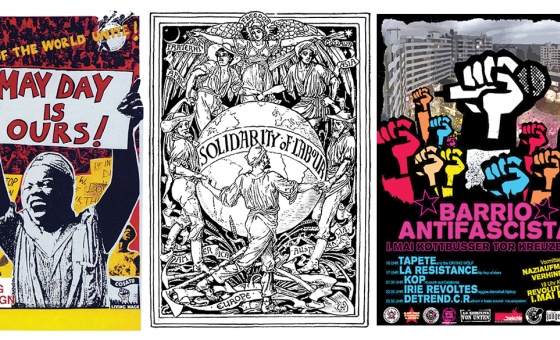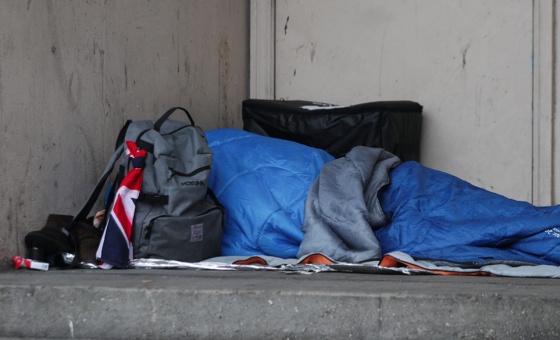This is the last article you can read this month
You can read more article this month
You can read more articles this month
Sorry your limit is up for this month
Reset on:
Please help support the Morning Star by subscribing here
(Un)Defining Queer
Whitworth Art Gallery, Manchester
DOES an individual’s gender, sexuality, race, colour or disability define the way they look at or appreciate art?
Have art galleries and museums adapted to be more inclusive and engaging with all communities within society? If not why not? And if so, what does this adaption look like?
These are some of the discussions around re-imagining art and how it is presented in galleries and museums.
Earlier this year Manchester’s Whitworth engaged with an intersectional group of individuals who self-identify as being members of the LGBTQIA+ community, to develop a project which would interrogate the gallery’s collection through a queer lens.
The exhibition producer Dominic Bilton explains that the project allows the LGBTQIA+ community to represent themselves and for the Whitworth to really represent them.
Part of the project is an intention to develop a “Queer Glossary” which will explore how LGBTQIA+ identities should be defined in the gallery. Visitors are being asked to play a role in developing the glossary by making suggestions on cards before leaving. These suggestions will help the Whitworth better represent queer individuals both in terms of how the gallery is perceived and the language used in its publicity and exhibitions.
The exhibition covers five themes: Activism, Family, Mythology, Gender Acts and The Queer Gaze. Each explores how gender and sexuality are portrayed in art and whether it can be re-interpreted through a queer lens.
Project participants comment on each exhibit with what the work means to them as a queer person. For example, beside a marvellous engraving of Jupiter Embracing Cupid (1517), by the renaissance artist Marcantonio Raimondi, a young man wrote that growing up he was confused and worried about his sexuality and that the only confirmation of how he felt was by looking in his parents’ art books. Mythological paintings reproduced there appeared to represent his feelings.
Some of the work chosen for the exhibition is openly and proudly queer, for example Sarah Joy Ford’s embroidered quilt Chain Reaction ii, which celebrates the personal activism of “Rebel Girl” and drag artist Karen Fisch. Others are more open to interpretation such as the engraving Vandyk (sic) as Paris (1807) by Luigi Schiavonetti.
A good example of the project’s thesis is Frances Hodgkins’s Convalescent (1911). Viewing this through a queer lens, it is possible to interpret it as a loving lesbian relationship. The reclining woman with arms folded behind her head suggesting an intimacy. But through a different lens it can be viewed as a caring and compassionate composition between two friends or relatives.
Neither is right or wrong. Interpreting art is very subjective and individualistic and as John Berger says: “How you see art depends on what defines you.”
The project raises important questions around the purpose of art and how it is presented. Has art in the 21st century become more inclusive and less elitist? How do we ensure that there is always the opportunity for diverse representation in gallery collections?
It is an ambitious project and the concept is not without difficulties. For a start, the very subjectivity of how we look at art is itself problematic. Two individuals, irrespective of their gender, sexuality, race or disability will look at a work of art differently. Some will see something that is invisible to another person. Someone will hate a piece while another person will love it, hailing it a masterpiece.
This does not negate this type of exhibition. In fact the very opposite, this debate is extremely important, in the same way as Rosy Akalawu-Ellman’s brilliant lecture as part of the National Gallery’s Black History Month, argued for a greater access and understanding of black art within the mainstream.
The Whitworth seems to be asking is there such a thing as queer art and if so how is it represented in the mainstream? The answer is of course that there is, but to ensure it gets its rightful exposure requires a number of approaches such as ensuring the inclusion of artists who self-identify as queer, examining how to queer exhibition spaces and for curators to be aware of addressing queer sensibilities.
Other galleries have attempted similar projects. In 2010/2011 Birmingham Museum and Art Gallery held an exhibition called “Queering the Museum” and in 2012 Leeds University ran a project Other Stories — Queering the University Art Collection. Both these covered similar ground as the Whitworth’s.
In 2007 Liverpool Walker gallery repositioned a number of works to see whether the viewer would look differently at the exhibits through a queer lens.
The challenge for the Whitworth is whether it can it re-discover the missing LGBTQIA+ ideas and narrative by challenging the heteronormative views within the gallery. Will the practice and curatorial approach within the space integrate queer practice into all aspects of what the gallery does? This exhibition is the start of the debate. What’s harder is defining what needs to change and how does the gallery make those changes?
It is an important debate and given that over 900 people turned up to the opening night, the Manchester LGBTQIA community certainly agree.
When leaving the exhibition it was nice to see a huge banner in celebration of Mark Ashton, the YCL and a defiant hammer and sickle.
Runs until December 3 2023 admission free. For more information see: whitworth.manchester.ac.uk












